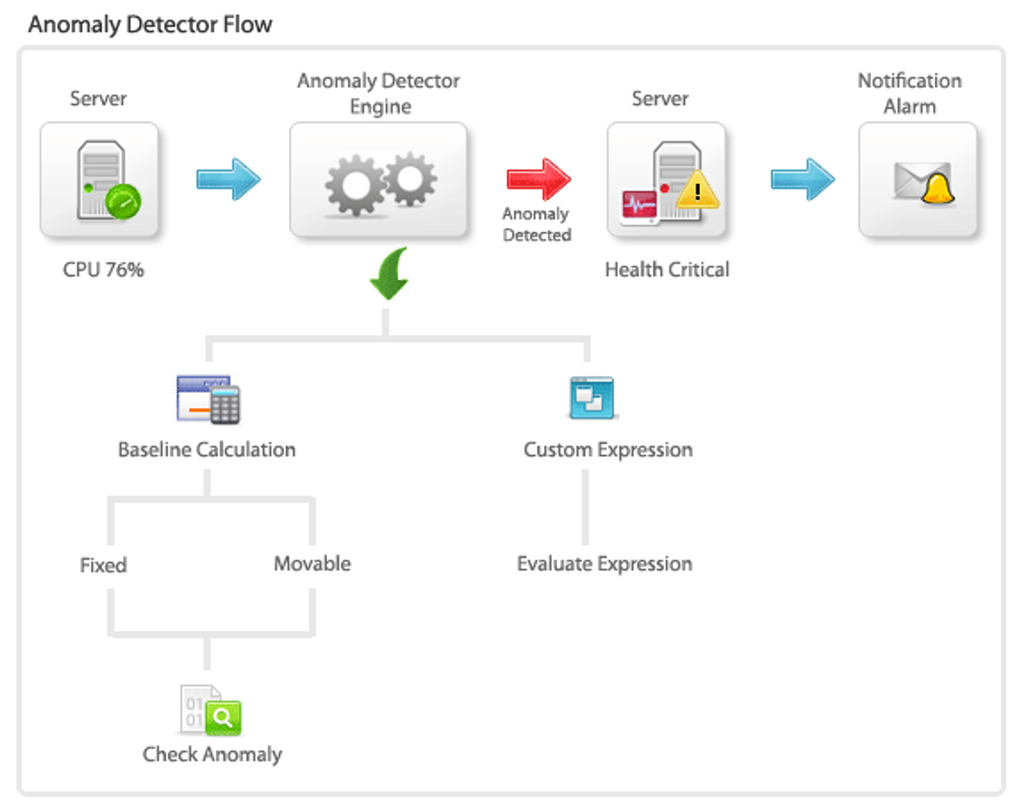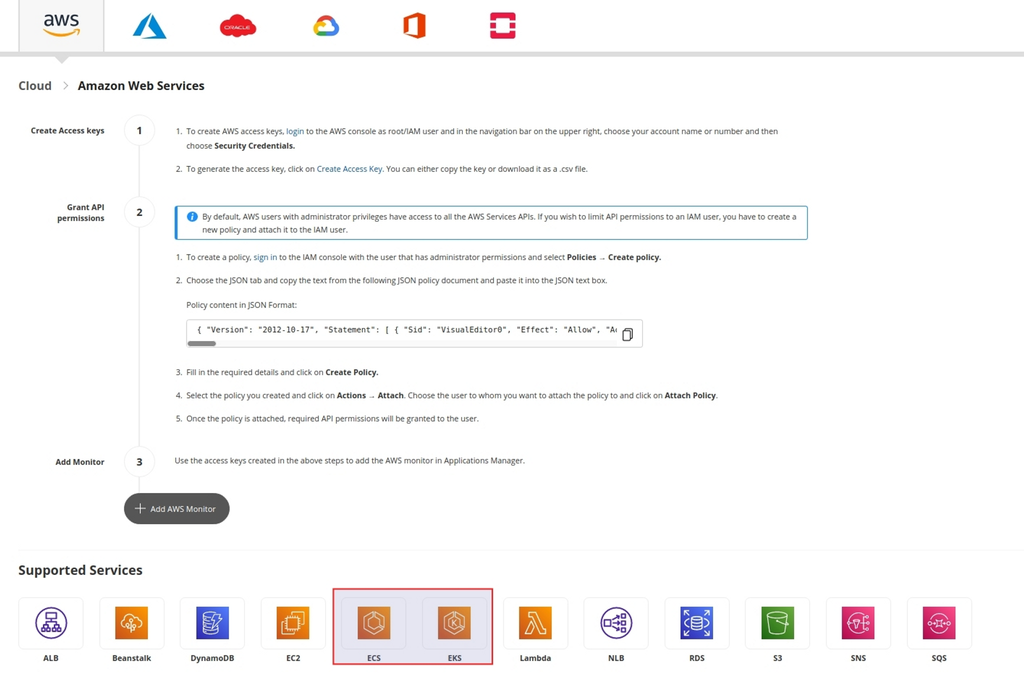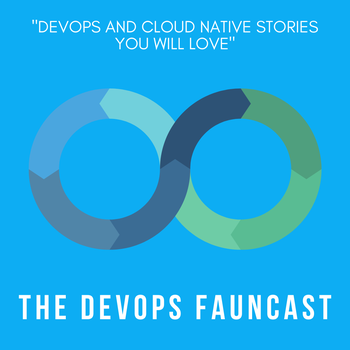
How ManageEngine Applications Manager Can Help Overcome Challenges In Kubernetes Monitoring

We tested ManageEngine Applications Manager to monitor different Kubernetes clusters. This post shares our review and the different features we found helpful in this tool.
Kubernetes is Powerful but Challenging
Kubernetes is the most popular open-source container orchestration system that automates the deployment, scaling, and management of containerized applications. As Kubernetes environments become more complex, monitoring becomes increasingly important to ensure optimal performance and availability.
Kubernetes monitoring involves collecting, analyzing, and visualizing data on the health and performance of Kubernetes clusters, nodes, and containers.
In this blog post, we will discuss the challenges of Kubernetes monitoring. We are also examining one of the most popular solutions to monitor Kubernetes: ManageEngine Applications Manager. After reading this article, you’ll get a better understanding of Kubernetes monitoring and how ManageEngine Applications Manager can help overcome these challenges.
Challenges in Monitoring Kubernetes Clusters and Workloads
The complexity of Kubernetes, which is composed of different components such as the Kubernetes API server, etcd, kubelet, and kube-proxy, makes it challenging to monitor.
When running workloads in a Kubernetes cluster, different layers are involved: bare metal or virtualization infrastructure, Kubernetes system and network components, nodes, pods, containers, and containerized applications. The dynamic nature of a Kubernetes cluster adds even more complexity, with new resources such as pods being created and destroyed to meet desired states or scalability constraints.
To monitor a cluster effectively, it's important to have a tool that can automatically discover new resources and remove old ones from the list. This ensures that your cluster is always up-to-date. Regularly reviewing the list of resources can help optimize the cluster and ensure that it's running as efficiently as possible.
Overall, monitoring Kubernetes should be inclusive by taking care of all the important resources of your cluster from nodes and pods to containers, Kubernetes-hosted applications, and services.
Failing to effectively monitor your cluster and workloads may have serious consequences for your application's performance as well as the associated costs.
Auto-discovery, resource and performance visibility, alerts, application errors, pod health, capacity tracking, and more are all essential features that your Kubernetes monitoring tool should integrate.
Besides requiring a good understanding of each of your clusters’ components and their interactions with the others, it is important to have a comprehensive monitoring solution.
Let’s see the most important features of ManageEngine Applications Manager and how it can help us overcome these challenges.
Introducing ManageEngine Applications Manager: Optimizing IT Performance and Availability
ManageEngine Applications Manager is an application performance monitoring (APM) tool that helps businesses monitor their IT infrastructure and applications to ensure optimal performance and availability. It provides end-to-end monitoring capabilities for various components of an application stack, including servers, databases, web services, and custom applications.
Applications Manager provides a range of useful features, including real-time monitoring, root cause analysis, performance analytics, and SLA management. This allows businesses to detect and resolve performance issues before they impact end-users. Moreover, it offers detailed insights into the performance of individual application components, enabling IT teams to identify bottlenecks and optimize resource utilization.
The monitoring platform is compatible with various technologies, such as Java, .NET, PHP, Ruby on Rails, and others. It can be deployed on-premises or in the cloud seamlessly and integrates with various cloud computing providers and infrastructure platforms such as containers (e.g. Docker) and orchestration platforms (e.g. Kubernetes).
We conducted thorough testing of ManageEngine Applications Manager with standalone Docker containers, a Google Cloud GKE, and an AWS EKS cluster. Our comprehensive discovery test allowed us to uncover a range of special features and capabilities which we will share with you in this document.
Optimizing Container Performance with ManageEngine Applications Manager
ManageEngine Applications Manager offers built-in support for monitoring containers, allowing businesses to monitor the performance of their containerized applications and infrastructure. With this tool, users can monitor key performance metrics such as container CPU usage, memory consumption, network traffic, and container health. It also provides a unified dashboard for viewing container performance across multiple hosts and alerts users when thresholds are breached.
Applications Manager allows users to detect and investigate resource utilization anomalies, identify bottlenecks, and optimize container resource allocation by providing insights into container availability and performance trends.
To integrate with Docker, there is no need to install any agent or a third-party tool, since Applications Manager consumes the Docker Remote API to get deep insights into containers and achieve auto-discovery.
Applications Manager integrates with and provides insights on containers, whether they are standalone Docker containers or managed using Kubernetes. In the following section, we will explore how ManageEngine Applications Manager helps developers and DevOps engineers monitor Kubernetes clusters.
Navigating the Challenges of Kubernetes Monitoring Using ManageEngine Applications Manager
As shown in the previous section, the complex nature of Kubernetes clusters and the dynamic workloads they handle present significant challenges for developers and operations teams.
That's where ManageEngine Applications Manager comes in.
ManageEngine's Applications Manager has an outstanding Kubernetes monitoring solution that provides comprehensive tracking of resource consumption, pod availability and hosted applications and services. With this tool, you can easily set up alerts and monitoring dashboards to stay on top of any issues that may arise within your Kubernetes clusters.
Developers, Operations, and DevOps engineers use Applications Manager's Kubernetes monitoring tool to auto-discover clusters, monitor cluster stats, and gain visibility into operational data such as resource utilization per cluster, namespace, and pod.
The APM enables monitoring nodes' health, tracking CPU and memory usage, and ensuring sufficient node allocations and backups for pods.
After each new release, you can ensure that all desired pods in a deployment are running, track their resource limitations and configuration errors, and make sure that new pods are not stuck in a restart loop or performance bottleneck. This helps in making troubleshooting faster and decreasing the MTTR.
The real-time monitoring of the performance of Kubernetes-hosted applications and services as well as tracking network requests and errors helps in preventing issues while establishing a proactive approach to managing incidents and downtimes.
In the same context of being proactive, it is also possible to set up custom alerts based on your specific needs. When a threshold or anomaly profile is violated, an alert is triggered and sent to you through various channels, such as Slack, email, or SMS. It is also possible to automatically create tickets in ITSM tools like ServiceNow and ServiceDesk Plus and automate corrective actions when an anomaly is detected.
(You can read more about anomaly profiles here.)
In addition to these features, the main dashboard is flexible. Depending on your priorities, you can customize it by adding, editing, and removing data-rich dashboards.
Monitoring Kubernetes in Simple Steps
ManageEngine Applications Manager supports different Kubernetes infrastructures and distributions. If you are using GKE on Google Cloud, EKS in Amazon Web Services, or AKS in Azure, connecting your cluster to the monitoring tool is straightforward. You only need to authenticate Applications Manager with your cloud provider and then start setting up your dashboard.
Alternatively, if you are using another infrastructure provider or a bare-metal cluster, you can use the direct connection.
Monitoring Your AWS Containers (ECS) and Kubernetes Clusters (EKS)
ManageEngine supports AWS services, among other public and private cloud providers. Whether you are running your containers on ECS or in an EKS cluster, ManageEngine has covered both scenarios.
Using this tool AWS administrators can set up a proactive monitoring of EKS clusters which is an essential step to ensure hassle-free operations of mission-critical applications running on them.
ManageEngine Applications Manager provides comprehensive EKS performance monitoring tools that offer in-depth insights about EKS clusters, namespaces, nodes, and pods. It helps track cluster usage, node usage, pod availability, services, and persistent volumes.
ManageEngine Applications Manager also provides a clear visualization of EKS services and components using Service Maps can help identify various components of the services and their status.
The prerequisites for adding an Amazon EKS monitor are the AWS access key and secret key, and the EKS cluster endpoint, other than this nothing else is required.
It is also worth saying that Applications Manager can monitor other Amazon services such as Amazon EC2, Amazon RDS, Amazon DynamoDB, Amazon SNS, Amazon SQS, Amazon CloudWatch, and more.
Summary
Applications Manager is an award-winning software developed by ManageEngine, a unit of Zoho, that helps you monitor the performance of your business-critical applications and infrastructure components. With deep visibility into the performance and user experience of your applications, you can quickly isolate and resolve any performance issues across your entire application stack.
Not only does it help you identify and solve performance issues before your customers are affected, but it also improves and automates IT and DevOps processes for organizations of all sizes. This ultimately ensures an optimal end-user experience and delivers better business outcomes.
Kubernetes clusters resources can be easily monitored using Applications Manager, the installation is simple and the integration with remote clusters is done in a few clicks.
Among other features, we favored the alerting system, the proactive features such as automated corrective actions, and the easy installation process.
To give it a try, you can download Applications Manager for free and start building your own monitoring dashboards using this link.
If you are interested in knowing more about ManageEngine, you can read our review: A Review of Zoho ManageEngine. You can also read our other reviews about tools from the same vendor such as Site24x7.
Get similar stories in your inbox weekly, for free
Share this story:

The Chief I/O
The team behind this website. We help IT leaders, decision-makers and IT professionals understand topics like Distributed Computing, AIOps & Cloud Native
Latest stories
How ManageEngine Applications Manager Can Help Overcome Challenges In Kubernetes Monitoring
We tested ManageEngine Applications Manager to monitor different Kubernetes clusters. This post shares our review …
AIOps with Site24x7: Maximizing Efficiency at an Affordable Cost
In this post we'll dive deep into integrating AIOps in your business suing Site24x7 to …
A Review of Zoho ManageEngine
Zoho Corp., formerly known as AdventNet Inc., has established itself as a major player in …
Should I learn Java in 2023? A Practical Guide
Java is one of the most widely used programming languages in the world. It has …
The fastest way to ramp up on DevOps
You probably have been thinking of moving to DevOps or learning DevOps as a beginner. …
Why You Need a Blockchain Node Provider
In this article, we briefly cover the concept of blockchain nodes provider and explain why …
Top 5 Virtual desktop Provides in 2022
Here are the top 5 virtual desktop providers who offer a range of benefits such …






















